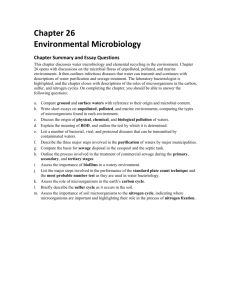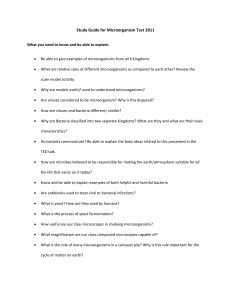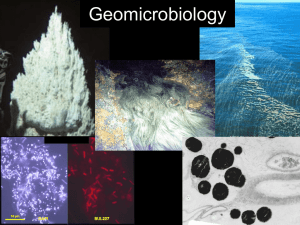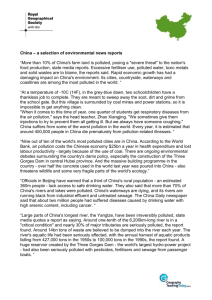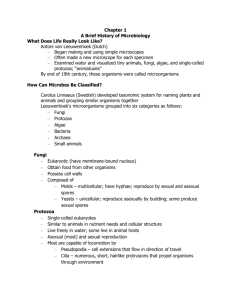River is one of the water resources on earth besides... and also other freshwater; lakes and underground water. As studied... CHAPTER 1
advertisement
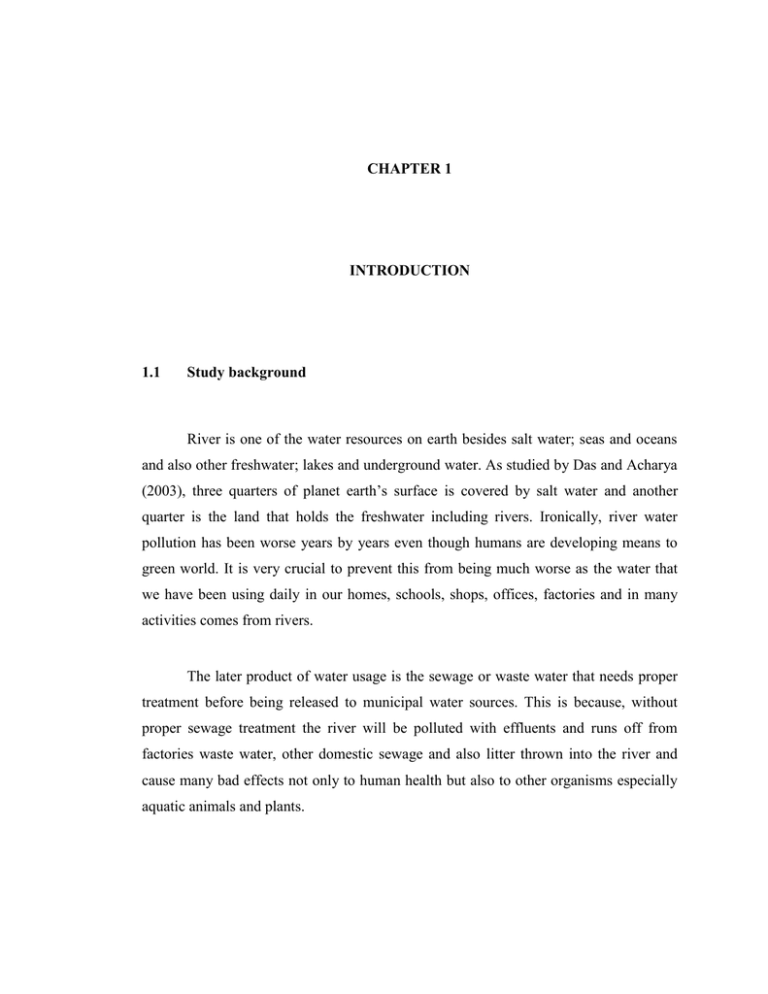
CHAPTER 1 INTRODUCTION 1.1 Study background River is one of the water resources on earth besides salt water; seas and oceans and also other freshwater; lakes and underground water. As studied by Das and Acharya (2003), three quarters of planet earth‟s surface is covered by salt water and another quarter is the land that holds the freshwater including rivers. Ironically, river water pollution has been worse years by years even though humans are developing means to green world. It is very crucial to prevent this from being much worse as the water that we have been using daily in our homes, schools, shops, offices, factories and in many activities comes from rivers. The later product of water usage is the sewage or waste water that needs proper treatment before being released to municipal water sources. This is because, without proper sewage treatment the river will be polluted with effluents and runs off from factories waste water, other domestic sewage and also litter thrown into the river and cause many bad effects not only to human health but also to other organisms especially aquatic animals and plants. River water pollution has high effect to water quality either for the sake of humans, aquatic animals and plants. Humans rely on river waters for drinking needs, foods, agriculture, transportation and many more besides being habitats for aquatic animals and plants which is to ensure ecological balance. The key to understand water quality is to understand what is „living‟ beneath it other than aquatic animals and plants which is the microbial community. These are because microbes are ubiquitous and the consumption of organic and inorganic matter depends on unique microbial metabolism usually involves the enzymatic activities for the survival in polluted or stress environment (John et al., 2010). And one way to understand the river conditions are by understanding the microbe‟s genome. Metagenomic studies known for studying many species of microorganisms as a whole instead of as individual in the laboratory. Metagenomic is also referred to as "community genomics" or "environmental genomics" because it is the sequencing and analysis of DNA of microorganisms recovered from the environment directly without the need for culturing the microorganisms (John et al., 2010). According to Cottrell et al., (2005) phylogenetic information is needed together with estimates of metabolic potential in order to link specific members of the community to biogeochemical processes. One approach to obtain this phylogenetic information is to screen metagenomic libraries for 16S rRNA genes in order to identify clones that can be used to explore the metabolic potential of targeted bacterial groups (Beja et al., 2001; Quaiser et al., 2002; Liles et al., 2003). 16S rNA gene sequence has hindered the technical difficulty of obtaining their sequences as opposed to clonal cultures without isolation of 16S rRNA or cloning of its gene into a host such as E.coli (Lane et al., 1985). This method also simplified a rapid expansion of 16S rRNA sequences collection available for phylogenetic analyses. 1.2 Problem statement The atmosphere, rivers, lakes and underground hold less than 1% of all the fresh water and this tiny amount has to provide the fresh water needed to support the earth's population. With the increased population will also increase the water needed to supply sufficiently. Fresh water is a precious resource and the increasing pollution of our rivers and lakes have causes an alarm to find alternative approach to deal with it. Microorganisms have unique ways to live in polluted environment. Thus, the presence of particular microbes in the environment may indicate the carbon source or types of conditions they lived in. By manipulating the mass number of the microbes, we can use it to study the environment particularly in river water either it is polluted or non-polluted by studying which microbes present in either both conditions. Furthermore, the presences of coliform microorganisms which are disease-causing bacteria in polluted water not only affect the environment, but also increase health problems in humans and other living organisms if consumed. Thus, by using molecular techniques to assess the river quality, biological methods not only provide the results of pollution level but also the microorganisms beneath it that can indicates types of pollutants in polluted river water. In addition with combining physical and chemical methods, it will confirm other biochemical tests which are complex in just one Polymerase Chain Reaction (PCR) test with the primers designed in this experiment particularly for river water in Malaysia for the time being. These will help the authorities a lot to conduct screening method in just a few hours compared to other tests which take longer time up to five days and above. 1.3 Objectives of study The objectives are:I. To design primers from the cloned library of DNA obtained from polluted and non-polluted river water. II. To select for a good candidate of designed primers using in-silico public access software: Oligo Calc and Oligo Analyzer. III. To test good candidate of designed primers in-vitro using environmental samples. IV. 1.4 To confirm bacteria as bioindicator for river water assessment. Scope of study The main focus of this study is designing universal primer by using bioinformatics tools to be used for rapid detection of polluted river water. As there is less findings of biological screening by using molecular approach for river water assessment particularly in Malaysia, this preliminary experiment in studying metagenomic field will hopefully be beneficial to effectively assess the water quality. Furthermore, it is simpler, easier, less time consumed and good results produced compared to conventional methods. Topik et al., (2012) in his previous study, already did with PCR clone library that emphasizes the major groups of microbes from polluted and non-polluted river water. The screening part provides useful information for designing primer in this experiment where it was tested on environmental water samples. 1.5 Significance of study This study is aimed at achieving the main goal for rapid detection of detecting river water pollution by using molecular techniques and bioinformatics tools (designed primers) as an alternative to the conventional method such as physical and chemical methods of BOD and COD. This is because, only a small percentage of microorganisms in nature can be cultured which means that the extant genomic data are highly biased and do not present the true picture of genomes of microbial species (Amann et al., 1995; Pace., 1997; Rappe and Giovannoni., 2003). Thus it is important to know the best way to assess the quality of river water. The best way will give the results either the river water has been polluted or not in a short time and also details of water content to recognize the pollutants for further actions to be taken. Metagenomic method which process usually takes only up to 24 hours will exclude the laborious culturing method. On the other hand, metagenomic also allow a more accurate elucidation of microbial population study as it can include the molecular information of bacteria which are very difficult to be cultured in the lab or also known as unculturable bacteria. The simplest screening approach by using good candidate designed primers to assess water quality had been done in this study that excludes the limitations of unculturable bacteria. The findings of this experiment will enable bacteria being used widely as bio-indicator to assess water quality as suggested by Topik et al. (2012) whereby less laborious, less time consumed and cost-effective approach had been applied by using bio-informatic tools and PCR to imply these simplest water assessment screening approach.
